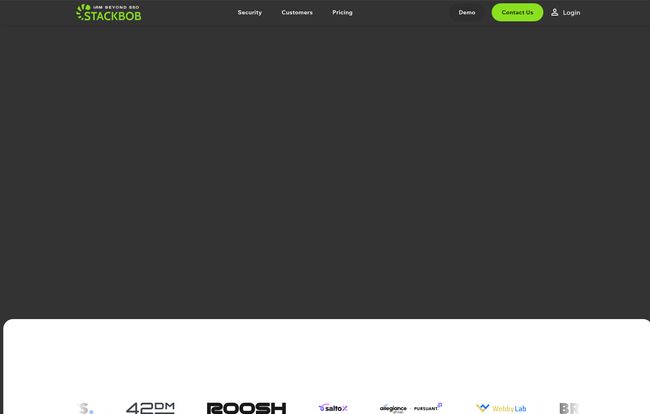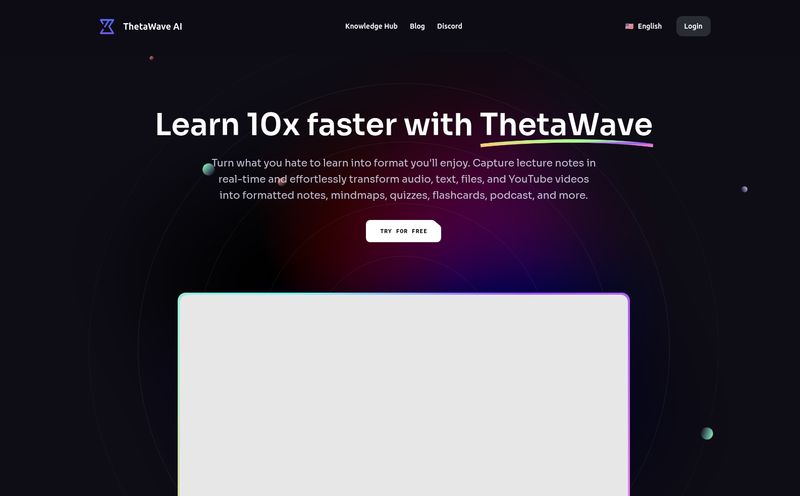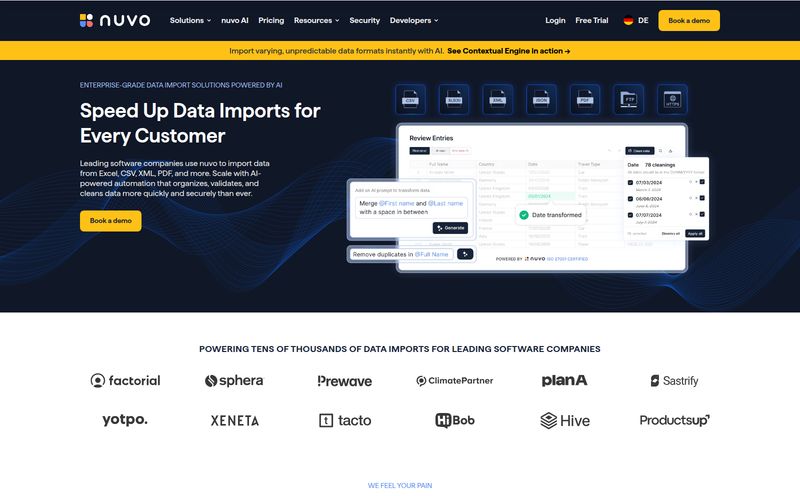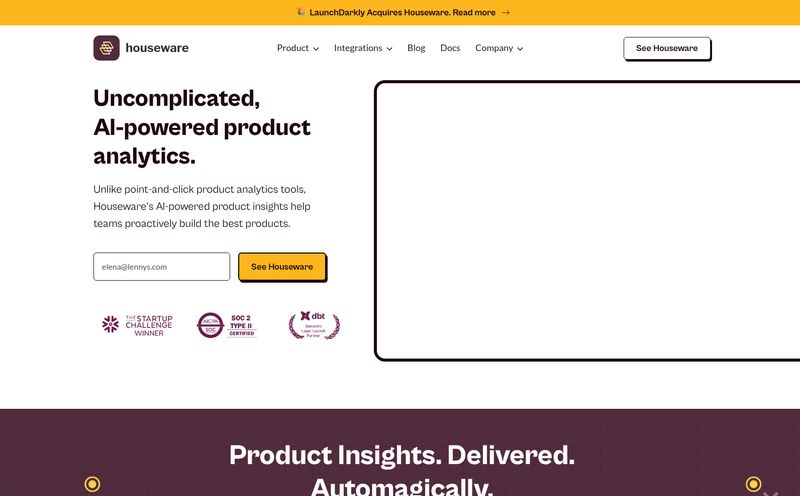If you're in IT, Ops, or even just a founder trying to keep things from catching fire, your company's list of SaaS subscriptions probably looks less like a curated toolkit and more like a teenager's messy bedroom. You've got tools for marketing, tools for sales, tools for dev, and three different project management apps because each team leader swore theirs was the one.
And managing who gets access to what? It's a nightmare. Onboarding a new hire takes a dozen emails and a prayer. Offboarding someone? You just cross your fingers and hope you've revoked access to everything important, secretly knowing they probably still have a login to that one analytics tool from 2021.
I’ve been in this world for years, and I’ve seen this exact problem scale from a minor annoyance to a full-blown financial and security risk. So when I heard about a platform called StackBob claiming to solve this mess—even for the weird, custom, or non-enterprise tools—my curiosity was definitely piqued. Is it just another tool for the pile, or is it the thing that cleans up the whole room?
What Exactly is StackBob? (And Why Should You Care?)
Alright, so the technical term is a modern Identity & Access Management (IAM) solution. But that sounds boring. Think of it more like a universal key master for every single online tool your company uses. It handles who gets access, who loses access, and helps you see who's actually using their paid licenses.
But here's the part that made me lean in. StackBob says it can manage access for over 300,000 online tools, and here's the kicker: even if those tools don't have SSO or a fancy API. This is a big deal. For years, the gold standard for easy access management has been SAML SSO, but that usually requires you to be on an expensive Enterprise plan. StackBob is basically saying, "Nah, you don't need to do that anymore." It works with your free-tier tools, your weird legacy systems, and even that custom internal dashboard your dev team built. A pretty bold claim.
The Core Features That Made Me Look Twice
A bold claim is one thing, but execution is everything. As I looked into what StackBob actually does, a few things really stood out to me as solutions to problems I’ve personally had.
Universal Integration That Actually Feels Universal
This is the headline feature, isn't it? The ability to connect with basically any cloud service. We're not just talking about the big players like Slack or Salesforce. We're talking about the niche SEO tool the marketing team loves or the design asset library that doesn't offer SSO. StackBob's approach means you can bring your entire chaotic stack of apps under one roof for access control. This is the holy grail for IT managers who are tired of saying, "Sorry, we can't automate that one."
Automating the Onboarding and Offboarding Grind
I once worked with a company where an ex-employee had access to their main social media account for six months after leaving. Nobody realized until he accidentally liked a competitor's post. Yikes.
This is where automated provisioning and deprovisioning becomes a lifesaver. With StackBob, you can set up workflows so that when a new employee joins, they get access to all their required tools automatically. And when they leave? Poof. Access is revoked everywhere, instantly. No more manual checklists, no more "Did someone remember to remove them from Asana?", and no more security nightmares.

Visit StackBob
Finding Your Lost Money with License Management
SaaS waste is real. You're paying for 50 licenses of a tool, but only 30 people have logged in this quarter. That's money just flying out the window. StackBob gives you usage insights, showing you who's using what and how often. This isn't just about saving a few bucks; it's about making informed decisions. You can de-provision licenses from inactive users and reallocate them, or realize you can downgrade your plan. It’s like finding money in your company's couch cushions.
The Good, The Bad, and The Nitty-Gritty
No tool is perfect, of course. It’s all about whether the good outweighs the bad for your specific situation. Here’s my take.
What I Really Like About StackBob
The speed of setup is a huge plus. The website says you can be up and running in hours, not the months-long implementation sagas we’ve come to expect from enterprise software. I also love that it frees you from the tyranny of the "Enterprise Plan." So many SaaS companies gatekeep SSO to force you into their most expensive tier. StackBob provides a clever workaround, which I think is fantastic for growing companies that need the security but don't have a Furtune 500 budget. Above all, it’s the enhanced security and compliance that gives real peace of mind. Knowing access is controlled and auditable is just… a massive weight off your shoulders.
A Couple of Things to Keep in Mind
Now, for the other side of the coin. The pricing is based on the number of managed users. For a small team, this is great. But for a very large organization with hundreds or thousands of employees, the costs could add up quickly. You'd have to weigh the yearly subscription against the savings from license optimization and reduced admin overhead. Secondly, some of the features, like employee surveys, are still listed as "coming soon". This isnt a dealbreaker, but it’s something to be aware of if that's a feature you're banking on from day one.
Let's Talk About StackBob Pricing
Transparency in pricing is always appreciated. While you should always check the official pricing page for the latest details, they do provide a clear example. For an organization with 201-300 users, the cost is laid out as follows:
User Tier: 201-300 Users
Annual Cost: $21,000 per year
Monthly Breakdown: $1,750 per organization, per month
Per User Cost: From $8.75 per user, per month
Is it cheap? No. But you’re not just buying a piece of software; you're buying security, efficiency, and cost savings. If it prevents one security breach or helps you cut thousands in SaaS waste, it could pay for itself very quickly. You have to do the math for your own company.
So, Who is StackBob Actually For?
In my opinion, StackBob hits the sweet spot for a few key groups. First, fast-growing startups and mid-sized companies that are deep in what I call "SaaS chaos." They have dozens of tools, a small IT team (or no IT team), and are starting to feel the pain of manual access management. Second, any organization that is security-conscious but doesn't want to be forced into pricey enterprise plans just for SSO. They want the control without the vendor-imposed price hike. If your help desk is flooded with "I can't log in" tickets, StackBob is probably for you.
Final Thoughts: Is StackBob the Real Deal?
After looking at it all, I'm genuinely impressed. StackBob isn’t trying to be just another identity provider. It's tackling a very specific, very modern, and very aggravating problem: managing access across a wildly diverse ecosystem of cloud tools. Its ability to work without relying on SSO is its true superpower.
It turns the mess of SaaS sprawl from a vulnerability into a manageable system. It's a strategic move for any company that wants to get a grip on its tech stack, secure its data, and stop wasting money. It might not be the right fit for every single business on the planet, but for those of us who have lived through the pain it solves, it looks pretty darn close to a magic wand.
Frequently Asked Questions about StackBob
What is StackBob in simple terms?
Think of it as a master key and an accountant for all your company's software subscriptions. It automates giving and taking away user access and helps you find where you're overspending on licenses.
Does StackBob require SSO for every app?
No, and this is its biggest advantage! StackBob is designed to manage access even for tools that don't offer Single Sign-On (SSO) or have available APIs, which is common with smaller, specialized, or free-tier applications.
How long does it take to set up StackBob?
According to their site, setup is designed to be quick, often taking just hours rather than the weeks or months typical of traditional enterprise IAM solutions.
Is StackBob secure?
Yes, security seems to be a top priority. Their website mentions they are SOC 2 Type II compliant, which is a key industry standard for security and data protection, providing assurance about the controls in place.
How does StackBob save money?
It saves money in two main ways: first, by providing usage insights that let you stop paying for unused software licenses. Second, it reduces the huge amount of administrative time your IT or Ops team spends manually managing user access requests.
Who is the ideal customer for StackBob?
Growing tech companies, mid-sized businesses, and any organization with a large number of SaaS tools that wants to improve security and efficiency without being forced to upgrade every single tool to an expensive enterprise plan.



